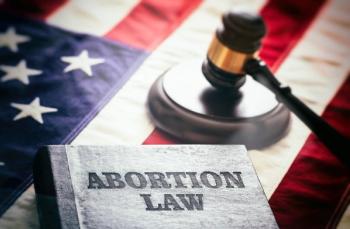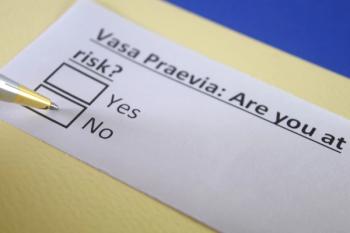
Teens, repeat birth and postpartum contraception
A CDC report looks at how effective messaging on postpartum contraception is in teenagers and the impact on repeat births. Plus: Does preeclampsia increase the risk of stroke? Also, a look at whether an old imaging technique could increase fertility.
A new report from the Centers for Disease Control and Prevention (CDC) shows that among teenagers in the United States, repeat births are down and use of postpartum contraceptives is up. More counseling of teenagers on contraception is necessary, however, because 1 in 3 who had previously given birth reported using a least effective method or none at all.
Published in
Reviewing the natality data, the authors found that the number of repeat teen births declined 53.8%, from 82,997 in 2004 to 38,324 in 2015, as did the percentage, from 20.1% to 16.7%. The drop in percentage of repeat teen births was most pronounced among blacks at 21.8% followed by Hispanics (16.8%), and whites (13.9%. No state saw a significant increase in repeat teen births and in 35 states, the decline in percentage of teen births that were repeats was significant.
Of the teens who had a recent live birth in 2013, 82.8% reported using postpartum contraceptives. However, the method was a least effective one for 15.7%, moderately effective for 40.2% of the teens, and a most effective form of contraception for 26.9% of the teens. Least effective methods included condoms, diaphragms, and withdrawal. The pill, an injectable, and a patch were among the moderately effective contraceptives. The most effective forms of contraception were the contraceptive implant and intrauterine device.
Commenting on the findings, the CDC authors noted that “further reducing repeat births among teens requires ensuring access to the full range of Food and Drug Administration-approved methods of contraception during the postpartum period and increased use of moderately effective and most effective methods.”
Preeclampsia and pregnancy-associated stroke
In women with preeclampsia, certain conditions may increase the risk of pregnancy-associated stroke, according to results of a new study published in
Researchers used billing data in the New York State Department of Health inpatient database from 2003 to 2012 to match women with preeclampsia and pregnancy-associated stroke 1:3 to preeclamptic controls, based on age and race/ethnicity. Risk factors for pregnancy-associated stroke included infection present on admission, vascular risk factors, prothrombotic state, coagulopathies, and pregnancy complications. Multivariable conditional logistic regression models were used to calculate odds ratios (ORs).
Among the women aged 12 to 55 years who were admitted to New York State hospitals for any reason during the study period (n = 3,373,114), preeclampsia was found in 88,857 and 197 of them had pregnancy-associated stroke. Following multivariable analysis, the researchers found that women who had both preeclampsia and stroke were more likely than the controls to have infections present on admission (OR, 3.0; 95% confidence interval [CI], 1.6–5.8); coagulopathies (OR, 3.1; 95% CI, 1.3–7.1); chronic hypertension (OR, 3.2; 95% CI, 1.8–5.5); severe preeclampsia or eclampsia. Results were confirmed with additional analysis matched and stratified by preeclampsia severity.
The researchers concluded that many factors, such as infection and coagulopathies, appear to increase the risk of pregnancy-associated stroke in women who have preeclampsia, which means that those who present with preeclampsia and one or more of the factors should be monitored more closely.
Does HSG contrast medium affect fertility?
Results of a new
Researchers performed a multicenter, randomized trial that spanned 27 hospitals in the Netherlands and on more than 1000 infertile women who were undergoing HSG. The participants were randomized to having the procedure performed with oil- or water-based contrast. The couples then either received expectant management or the women had intrauterine insemination. Primary outcome for the trial was ongoing pregnancy within 6 months following randomization.
During the trial, 1119 women were randomly assigned to HSG with oil contrast (557 women) or water contrast (562 women). Ongoing pregnancies were reported in 220 of 554 women in the oil group and 161 of 554 women in the water group (rate ratio, 1.37; 95% confidence interval [CI], 1.16 to 1.61; P < 0.001). Live births occurred in 214 of the 552 women in the oil group and 155 of the 552 women in the water group (rate ratio, 1.38; 95% CI, 1.17 to 1.64; P < 0.001). In the 2 groups, the rates of adverse events were low and similar.
Researchers concluded that women who undergo HSG with oil-based contrast have higher rates of pregnancy and live birth than those who undergo HSG with water-based contrast.
Newsletter
Get the latest clinical updates, case studies, and expert commentary in obstetric and gynecologic care. Sign up now to stay informed.









